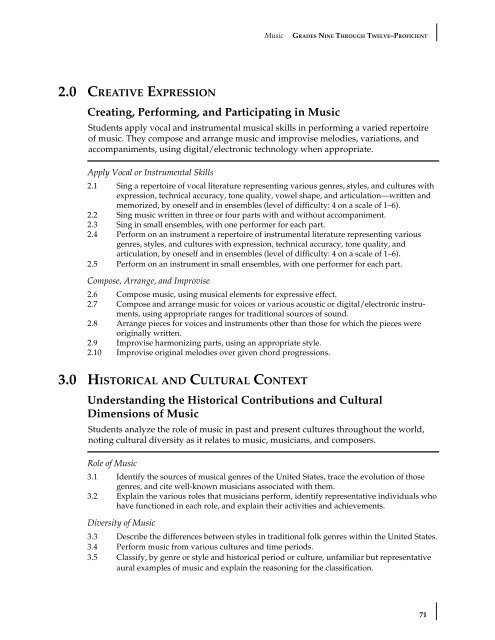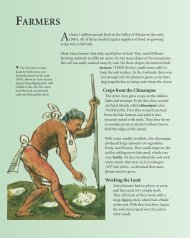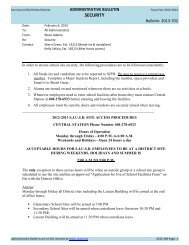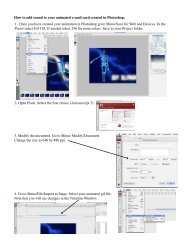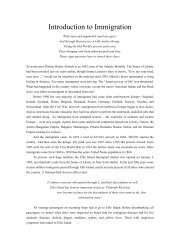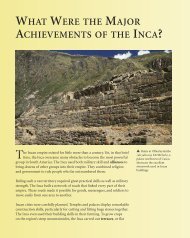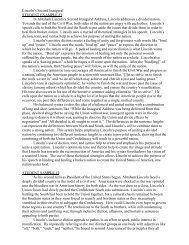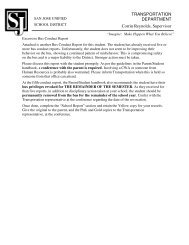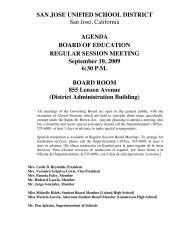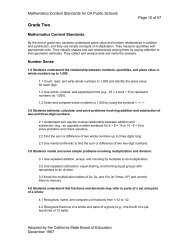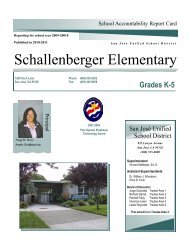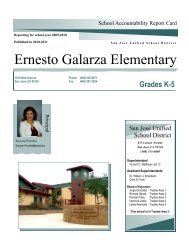Visual and Performing Arts Content Standards - California ...
Visual and Performing Arts Content Standards - California ...
Visual and Performing Arts Content Standards - California ...
You also want an ePaper? Increase the reach of your titles
YUMPU automatically turns print PDFs into web optimized ePapers that Google loves.
2.0 CREATIVE EXPRESSION<br />
Creating, <strong>Performing</strong>, <strong>and</strong> Participating in Music<br />
Music GRADES NINE THROUGH TWELVE–PROFICIENT<br />
Students apply vocal <strong>and</strong> instrumental musical skills in performing a varied repertoire<br />
of music. They compose <strong>and</strong> arrange music <strong>and</strong> improvise melodies, variations, <strong>and</strong><br />
accompaniments, using digital/electronic technology when appropriate.<br />
Apply Vocal or Instrumental Skills<br />
2.1 Sing a repertoire of vocal literature representing various genres, styles, <strong>and</strong> cultures with<br />
expression, technical accuracy, tone quality, vowel shape, <strong>and</strong> articulation—written <strong>and</strong><br />
memorized, by oneself <strong>and</strong> in ensembles (level of difficulty: 4 on a scale of 1–6).<br />
2.2 Sing music written in three or four parts with <strong>and</strong> without accompaniment.<br />
2.3 Sing in small ensembles, with one performer for each part.<br />
2.4 Perform on an instrument a repertoire of instrumental literature representing various<br />
genres, styles, <strong>and</strong> cultures with expression, technical accuracy, tone quality, <strong>and</strong><br />
articulation, by oneself <strong>and</strong> in ensembles (level of difficulty: 4 on a scale of 1–6).<br />
2.5 Perform on an instrument in small ensembles, with one performer for each part.<br />
Compose, Arrange, <strong>and</strong> Improvise<br />
2.6 Compose music, using musical elements for expressive effect.<br />
2.7 Compose <strong>and</strong> arrange music for voices or various acoustic or digital/electronic instruments,<br />
using appropriate ranges for traditional sources of sound.<br />
2.8 Arrange pieces for voices <strong>and</strong> instruments other than those for which the pieces were<br />
originally written.<br />
2.9 Improvise harmonizing parts, using an appropriate style.<br />
2.10 Improvise original melodies over given chord progressions.<br />
3.0 HISTORICAL AND CULTURAL CONTEXT<br />
Underst<strong>and</strong>ing the Historical Contributions <strong>and</strong> Cultural<br />
Dimensions of Music<br />
Students analyze the role of music in past <strong>and</strong> present cultures throughout the world,<br />
noting cultural diversity as it relates to music, musicians, <strong>and</strong> composers.<br />
Role of Music<br />
3.1 Identify the sources of musical genres of the United States, trace the evolution of those<br />
genres, <strong>and</strong> cite well-known musicians associated with them.<br />
3.2 Explain the various roles that musicians perform, identify representative individuals who<br />
have functioned in each role, <strong>and</strong> explain their activities <strong>and</strong> achievements.<br />
Diversity of Music<br />
3.3 Describe the differences between styles in traditional folk genres within the United States.<br />
3.4 Perform music from various cultures <strong>and</strong> time periods.<br />
3.5 Classify, by genre or style <strong>and</strong> historical period or culture, unfamiliar but representative<br />
aural examples of music <strong>and</strong> explain the reasoning for the classification.<br />
71


